Any large home or work environment will have locations where WiFi performance is poor, either because of local interference or equipment range.
How these zones overlap with the places you might want to use these facilities is a mystery yet to be unravelled, but it happens enough to go beyond coincidental.
Other than ditching wireless networking for the wired variety, the alternative approach to solving this problem is to use better technology and more distributed equipment.
However, how much is a person or business expected to spend to get workable WiFi since WiFi 6 and MESH connections typically incur a hefty price premium.
Zyxel might have some of those answers with its remarkably affordable NWA90AX WiFI 6 access point.
- These are the best Wi-Fi extenders
- Consider also the popular Google Wifi
Price
In the UK, the NWA90AX can be found on Amazon for £93.55, and across Europe, it’s around €109.90. It isn’t available through USA retailers currently, but we expect that it will be shortly.
That makes the NWA90AX about $10-15 more than the NWA50AX, which has fewer Enterprise security features but the same wireless technology.
The obvious competitor for this product is the Netgear WAX214, an access point with a remarkably similar specification that typically costs £93.49 in the UK and $94.32 in the USA.
More closely matching the NWA90AX is the Ubiquiti UniFi 6 Lite, with a very similar WiFi 6 implementation and a free Cloud management feature. The cost is £129.99 in the UK, but until recently, it was much cheaper, matching the price of the NWA90AX.
The popularity of the Ubiquiti UniFi 6 Lite as a cheap means to add PoE access points may have pushed the price up, and we may see something similar happen with the NWA90AX.
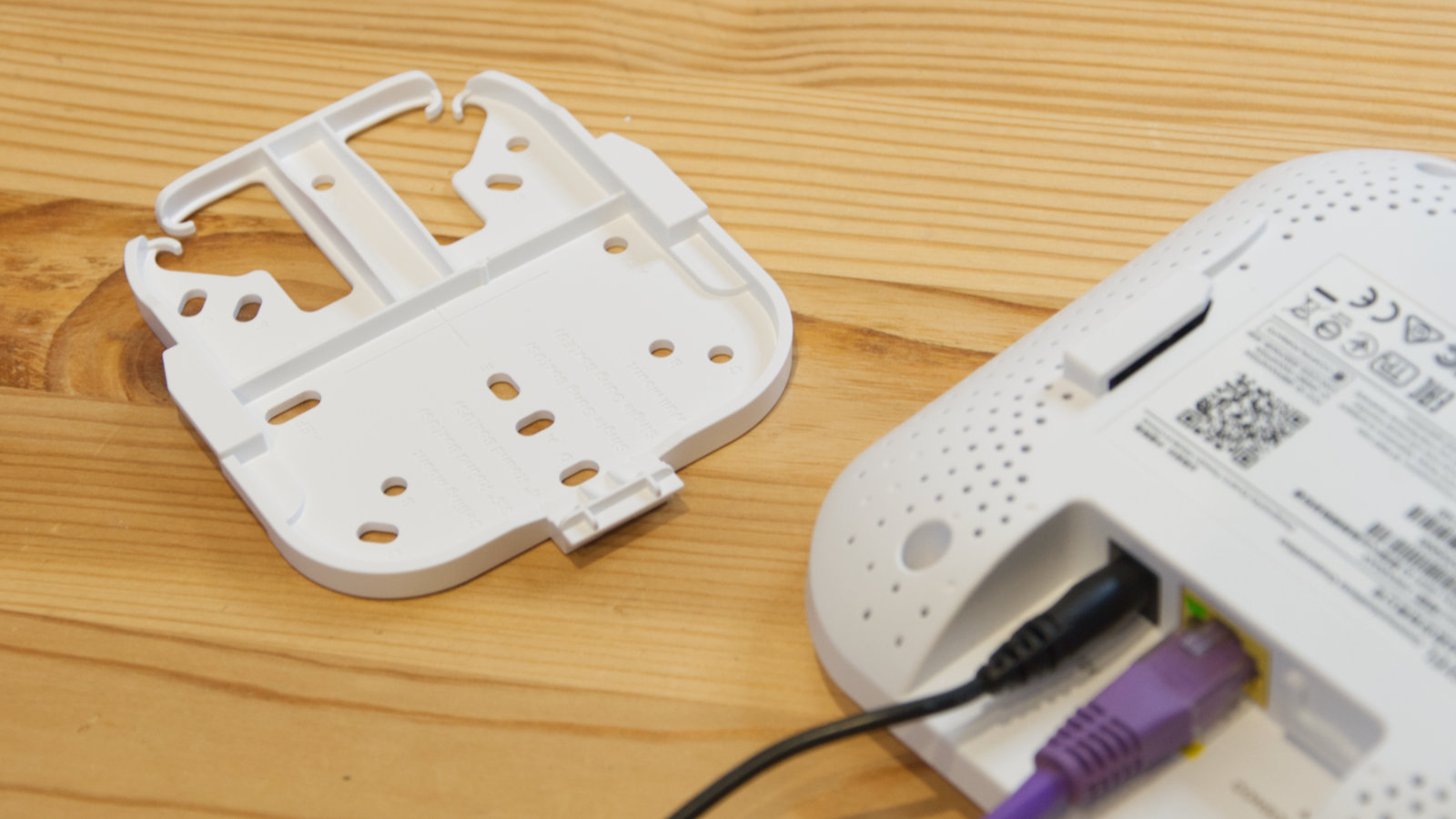
Design and features
The design of the NWA90AX isn’t a radical divergence from what many other hardware makers are doing. As the ideal location for one of these is either high up on a wall or on a ceiling, the size and appearance of the access point could make it easily confused with a smoke detector or security sensor.
This access point is 14cm square and 3.75cm thick comes with a simple plastic wall mounting plate and a 12V 1.5A power adapter. Connection on the underside is via a single RJ45 1Gbit LAN port, and a single LED on the upper face indicates activity and power.
The length of the power cable from the wall-socket PSU is about 6ft (175cm), enabling it to be placed high on a wall, but the NWA90AX has a more elegant solution than having both cables to run.
Zyxel made the NWA90AX PoE capable, allowing a single LAN cable to carry power and data in a single line. To achieve this requires a PoE (Power over Ethernet) 802.3at compliant switch that can offer 16W over that connection.
You can get injectors that can sit between a conventional switch and PoE hardware, and Zyxel makes these, but they don’t include one with the NWA90AX.
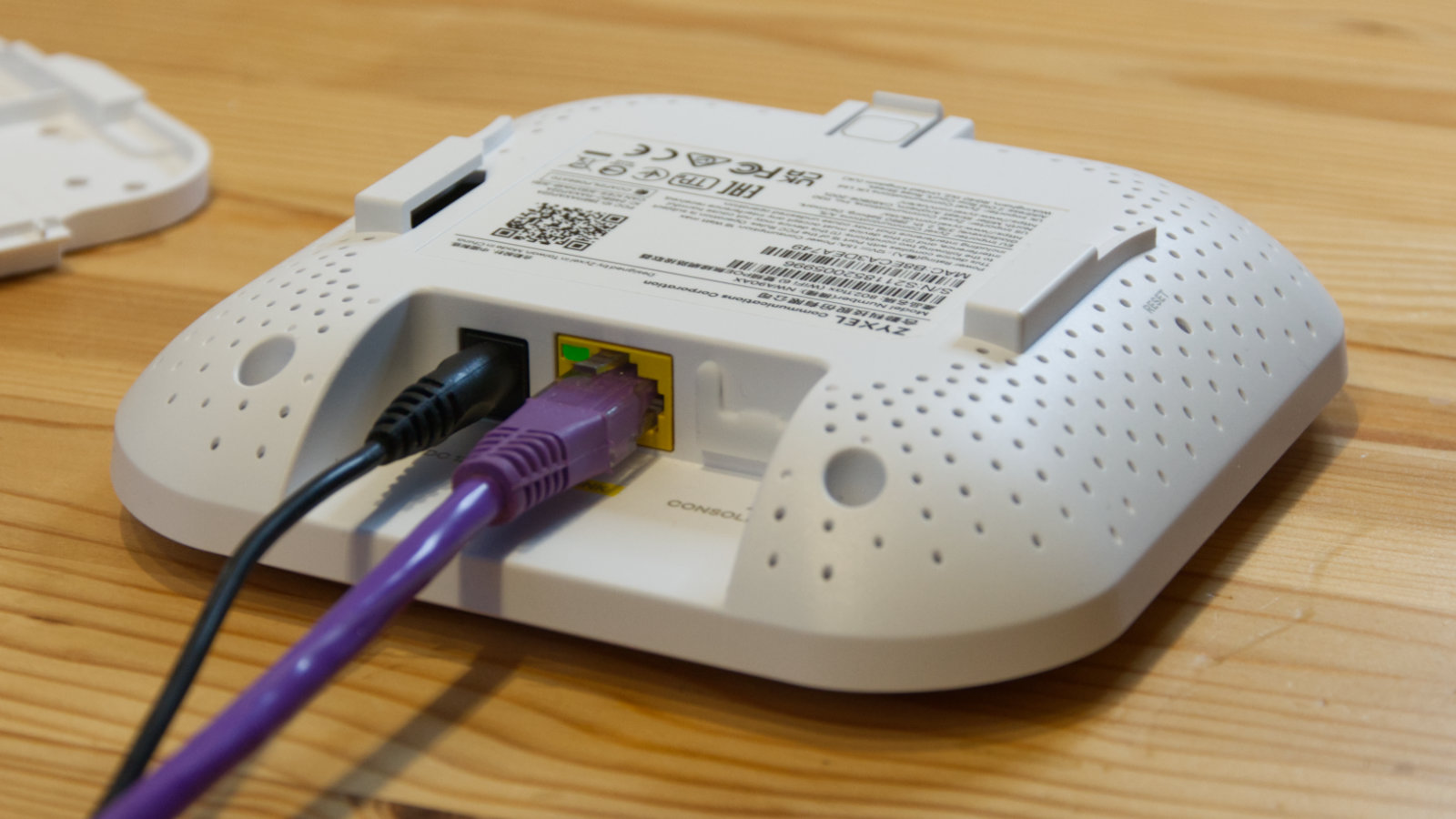
One oddity is that most access points that are wall-mounted assume that the cables come from below, but here the ports for both LAN and power are on the top edge. Not sure of the logic of this choice, but someone thought it was a good idea.
Internally, the NWA90AX is a dual-frequency dual-channel (2x2) design with a maximum throughput of 1775 Mbps.
Access points can shift four times that amount of data using extra frequencies and greater parallelism. But despite the enhanced throughput overall, they don’t offer substantially better performance to a single connected user.
The total 1775 Mbps of throughput is divided between connected users (up to 256) and is also restricted by the 1000 Mbps LAN downlink. If all the users are connecting to the greater network and not between other wireless connected devices, the shared capacity will be limited by the LAN connection.
These aren’t issues that are specific to the NWA90AX, but those investing in WiFi 6 technology should be aware that many of the performance numbers quoted by the makers are either theoretical or not practically achievable.
The major selling points of this design are its relatively low cost, support for Enterprise level security protocols, and Cloud management functionality. These features elevate it above cheaper WiFi 6 hardware primarily designed for home users.
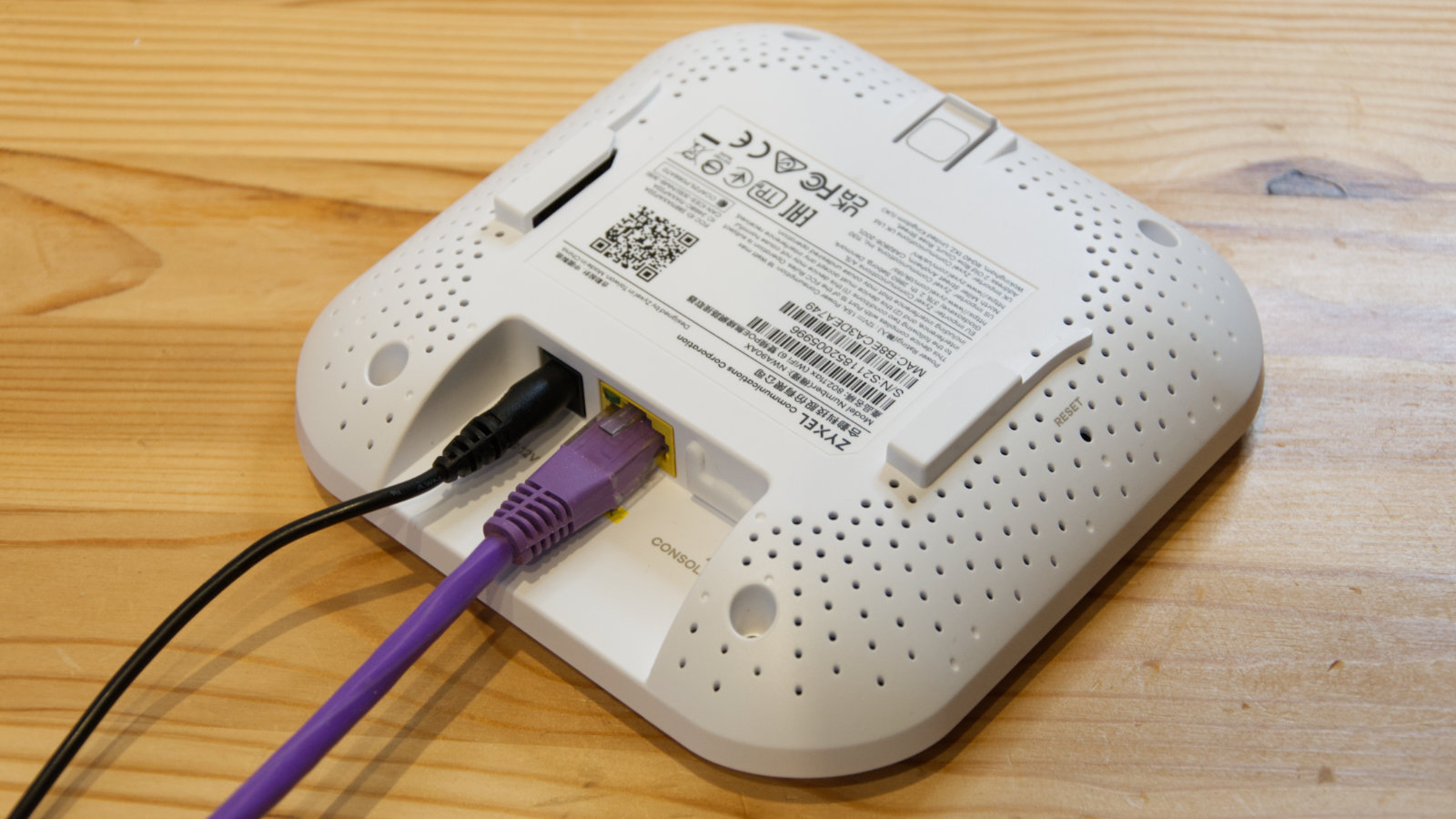
In use
Getting this equipment functioning should be easy since Zyxel has created a phone application to register the device to its management solution.
But it isn’t that straightforward because the mobile app assumes that you already have a Zyxel account, confusingly.
It is possible from the app to create an account, but the order of this process looks completely wrong for a first-time customer for Zyxel equipment.
What’s good is that once you’ve created a MyZyxel account, you can capture the hardware to that account using the QR code on the underside of the access point from within the app.
But then, to confuse a new customer, once that device appears inside the MyZyzel portal, you discover that the controls you expect to be there to configure the access point aren’t anywhere to be seen.
That’s because the true management tool is the Nebular control centre, and that’s a completely separate web location nested under MyZyxel. It isn’t obvious, there isn’t a true drill-down structure, and it will initially bewilder first-time customers as it did us.
You can circumvent all of this and directly access the device using its internal web GUI. But if you choose to use Nebular, some features are disabled on the local interface, providing more potential head-scratching moments for those that don’t realise that.
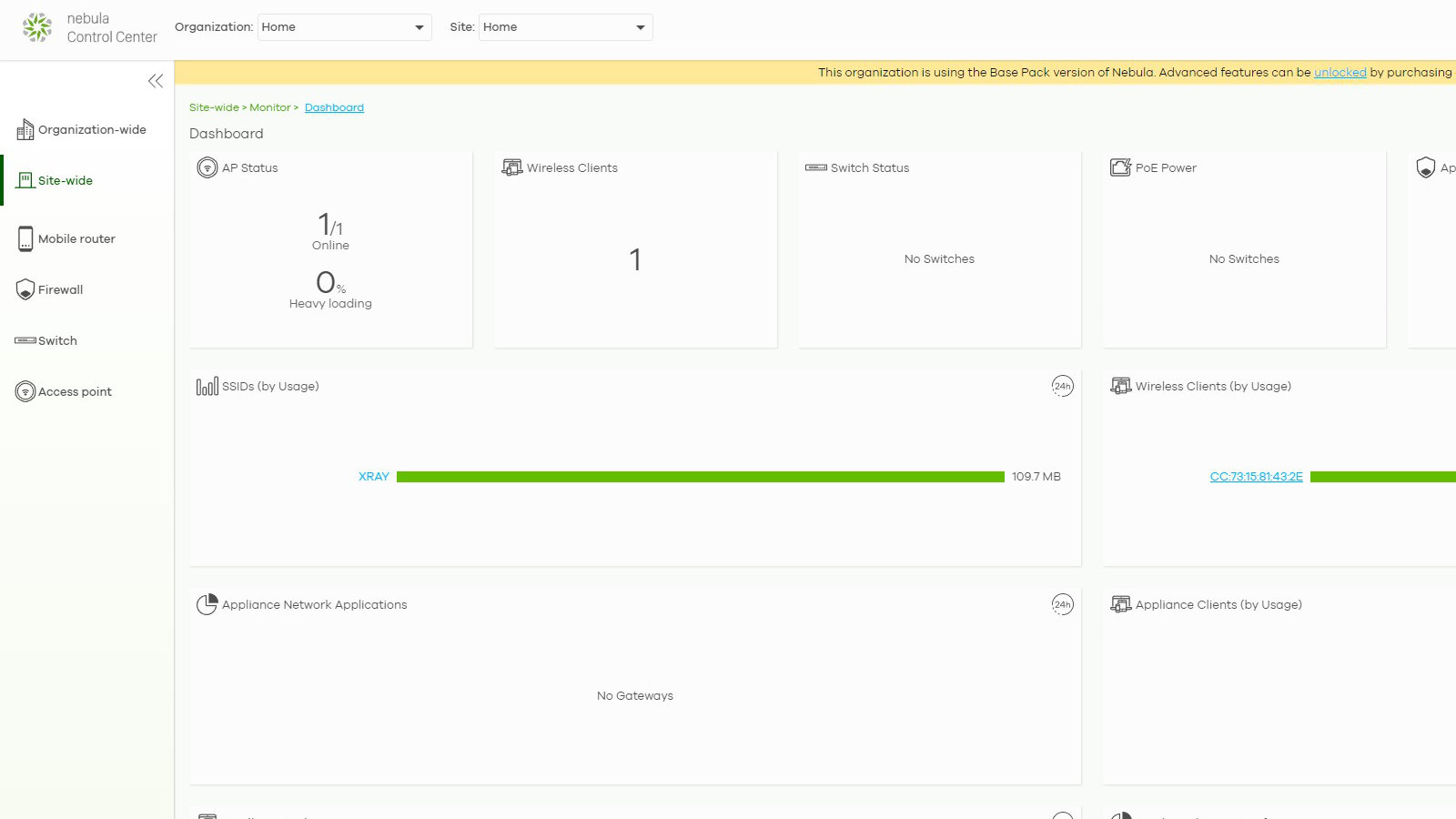
For home users, the local web interface might be a better choice, although the Nebula Cloud control works very nicely, albeit with a short time delay between cloud-initiated changes.
Once you get to the nebula.zyxel portal all the controls you might reasonably want are available, and it is possible to make site-specific or global changes to multiple devices deployed across a business.
We were very impressed with the granularity of the possible configurations, as the NWA90AX sports up to 8 SIDs, assisted roaming, Bridge mode, Layer 2 isolation, Cloud authentication and Enterprise WPA2/WPA3 logins.
Considering the relatively low cost of this device, the Enterprise friendly controls are impressive, and there is no subscription cost for the standard Nebula functionality of Cloud management.
There are subscription versions of the Nebula service with security enhancements that can provide real-time feedback on the applications using the network, provide content filtering and geofencing functionality alongside a VPN firewall.
The only part of the Nebula interface that needs some work is that it has a map that shows where the equipment resides. We’re unsure how it calculates this location, but ours was utterly wrong, placing the NWA90AX at least 80 miles away from where it resided.
Which begs the obvious question of what is missing from the NWA90AX?
A feature that isn’t on this device that could have made it even better are a 160Hz backchannel, common on many of the 3600AX capable access points. And the choice of a 1Gbit LAN port has performance implications depending on how you intend to use it.
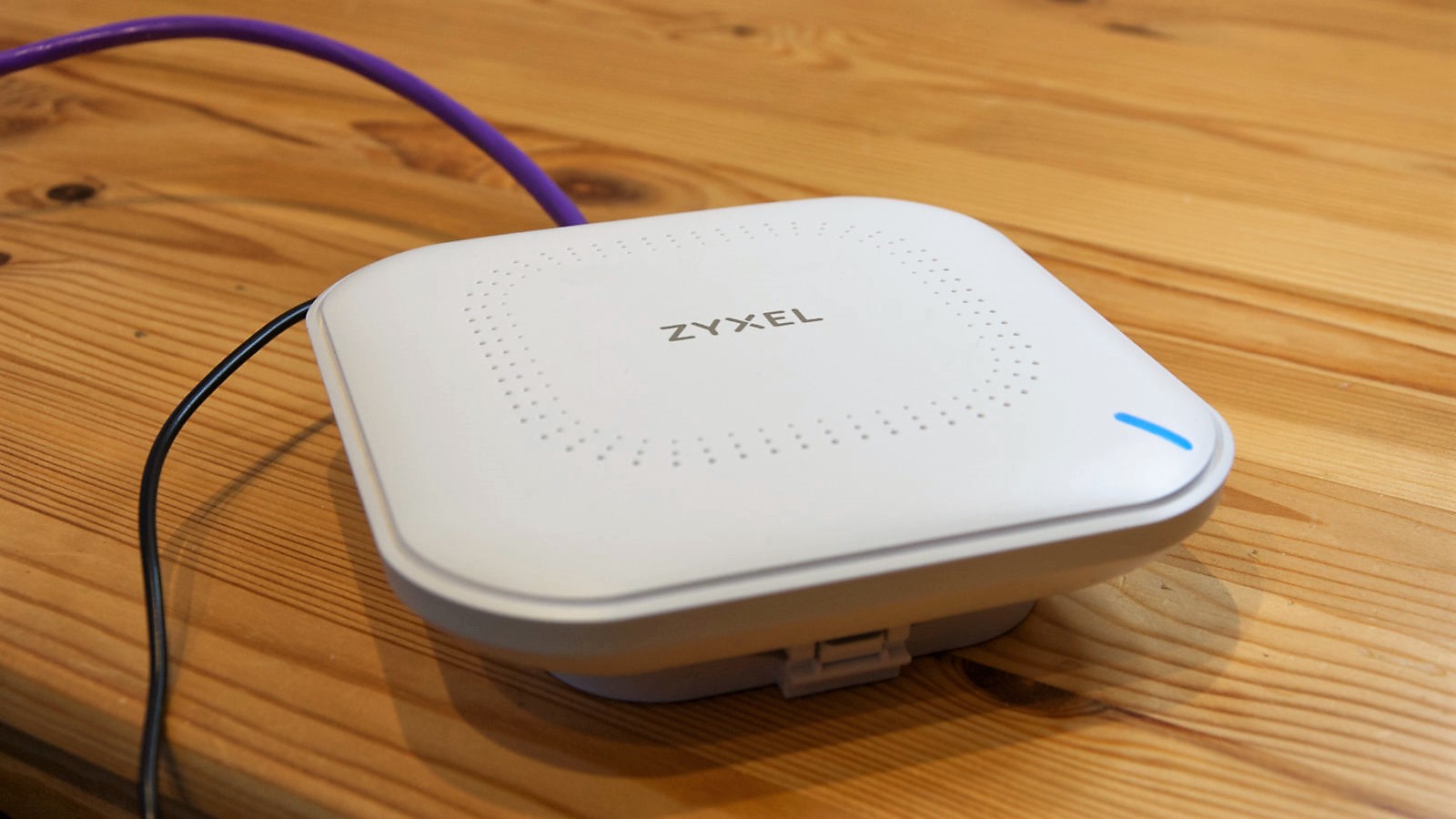
Performance
As with all current WiFi 6 technology, getting the most out of the NWA90AX requires the latest technology to be in the host adapter. We tested ours using an MSI WS66 mobile workstation and its Killer WiFi 6E AX1675x 160Hz Wireless network adapter.
According to Windows 10, the adapter was connecting at 1.2Gbps when alongside the access point. Although being realistic, as the LAN port is only 1Gbps, it wouldn’t be possible to use all that speed unless the laptop was connecting to another also linked at this level. With the total available bandwidth of WIFi being 1775 Mbps, that’s not achievable.
In theory, if it was connected to a combination of two machines, one on the LAN and one by WiFi it might be possible, but the significant variables in that scenario make the results less useful.
For our own sanity, we decided to test the performance to a LAN connected server, and that boiled the performance down to around 800Mbps at close range. That’s not the very fastest we’ve seen, but highly respectable.
Moving away from the access point but inside the same room dropped those numbers closer to 650Mbps.
For those using WiFi 5 adapters, the performance to be expected depends on the frequency of the connection, with 5GHz offering around 575Mbps and 2.4GHz about half of that.
As with most WiFi equipment, 2.4GHz has much greater penetration of walls and floors, but performance is always less than 5GHz at shorter distances.
The more significant performance issue for this hardware is that it can’t support many devices at this speed, and each subsequent device divides the amount of bandwidth to be shared by all.
With the stubbornly high cost of AX3600 access points, it might well be worth deploying multiple AX1800 units, like the NWA90AX, to handle more users or greater throughput demands.
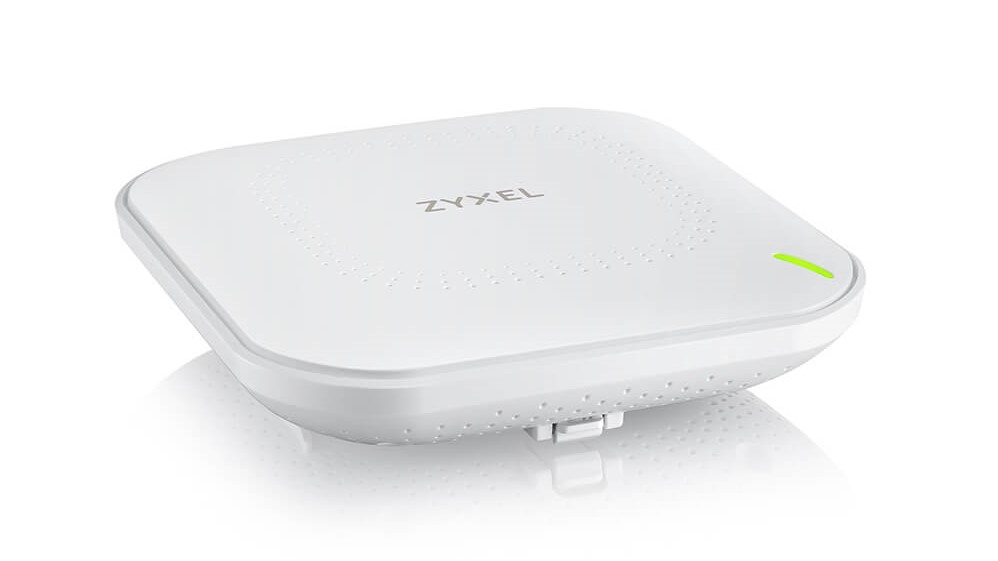
Final verdict
When Netgear launched its cheap WAX214 access point, it heralded a new era where WiFi hardware makers were finally forced to think about adding real value to their products and not just sticking the latest WiFi Alliance labels over rehashed designs.
The high hardware costs like the Netgear Orbi Pro are unsustainable in the longer term, and businesses are looking for low-cost, flexible solutions that can adapt to their business.
Now, the Zyxel NWA90AX is here, and it doubles down on this bet by adding a free Cloud management service into the mix for roughly the same price as the Netgear WAX214.
The only difficulty for potential buyers is that Zyxel also makes the even cheaper NWA50AX. That lacks a few Enterprise features but offers the same performance profile for those that don't need those.
For those that need Layer 2 isolation and Cloud portal logins, the NWA90AX is required, but if those aren’t prerequisites, the cheaper NWA50AX does almost the same job.
We’d have liked to have seen a 2.5Gbit LAN port, but that feature was reserved for the more expensive NWA110AX.
Overall, for the technology included in this and through the Zyxel Nebular Cloud solution, the NWA90AX is priced so aggressively that IT managers will be buying them by the truckload. Safe in the knowledge that they can quickly deploy these into WiFi problem locations when the need arises.
- Also take a look at the best Mesh Routers 2021 for the home
from TechRadar - All the latest technology news https://ift.tt/H8fdY5A


No comments:
Post a Comment